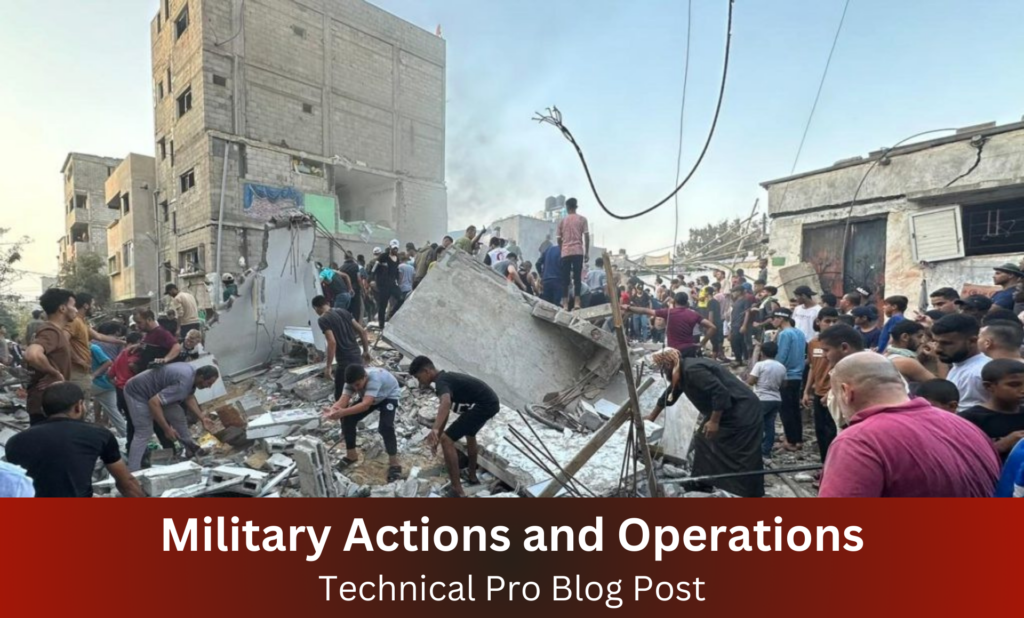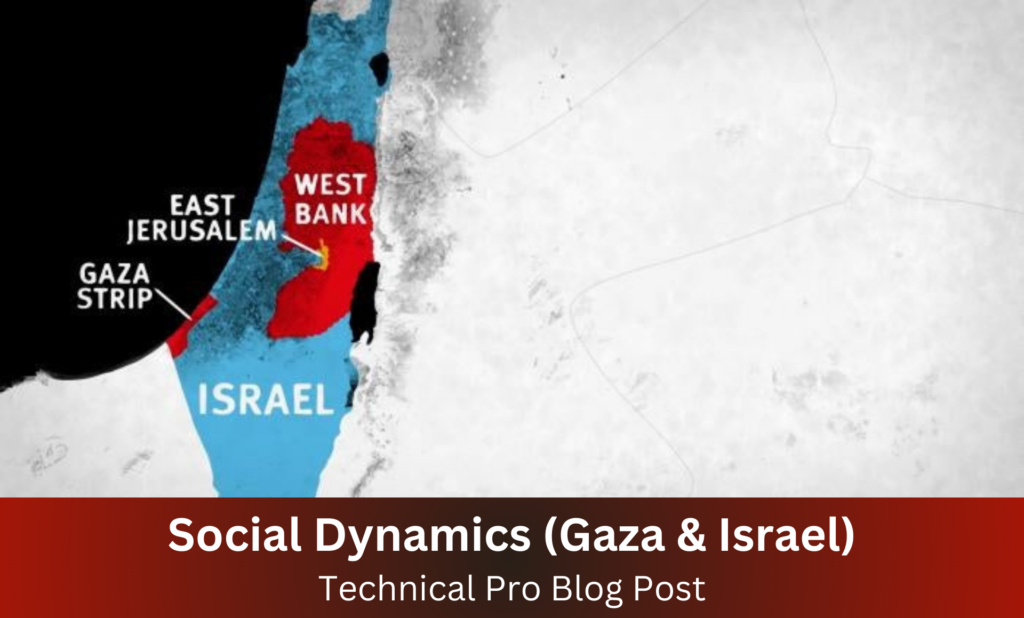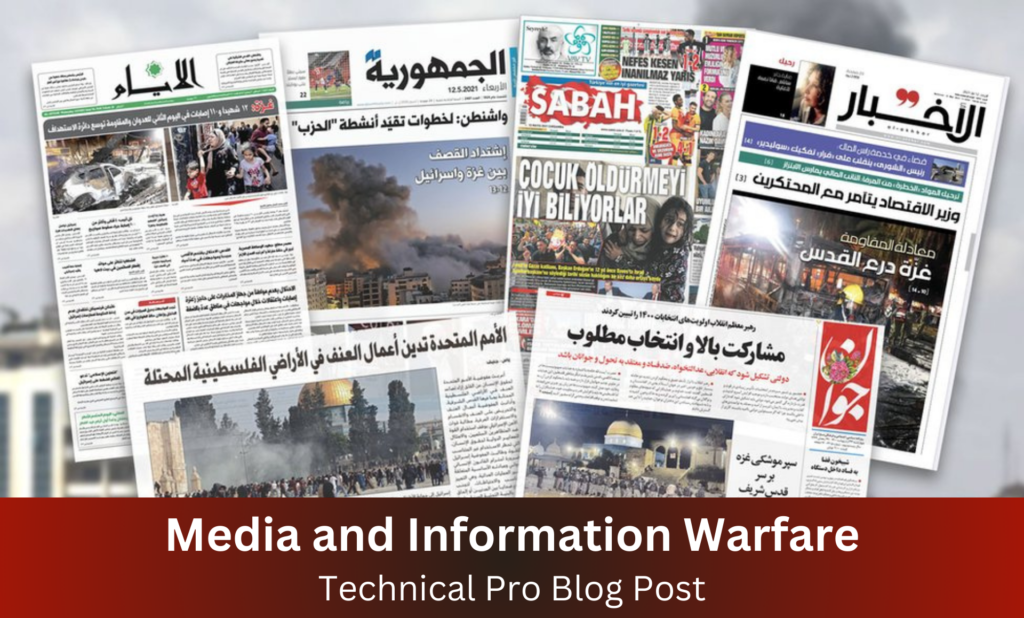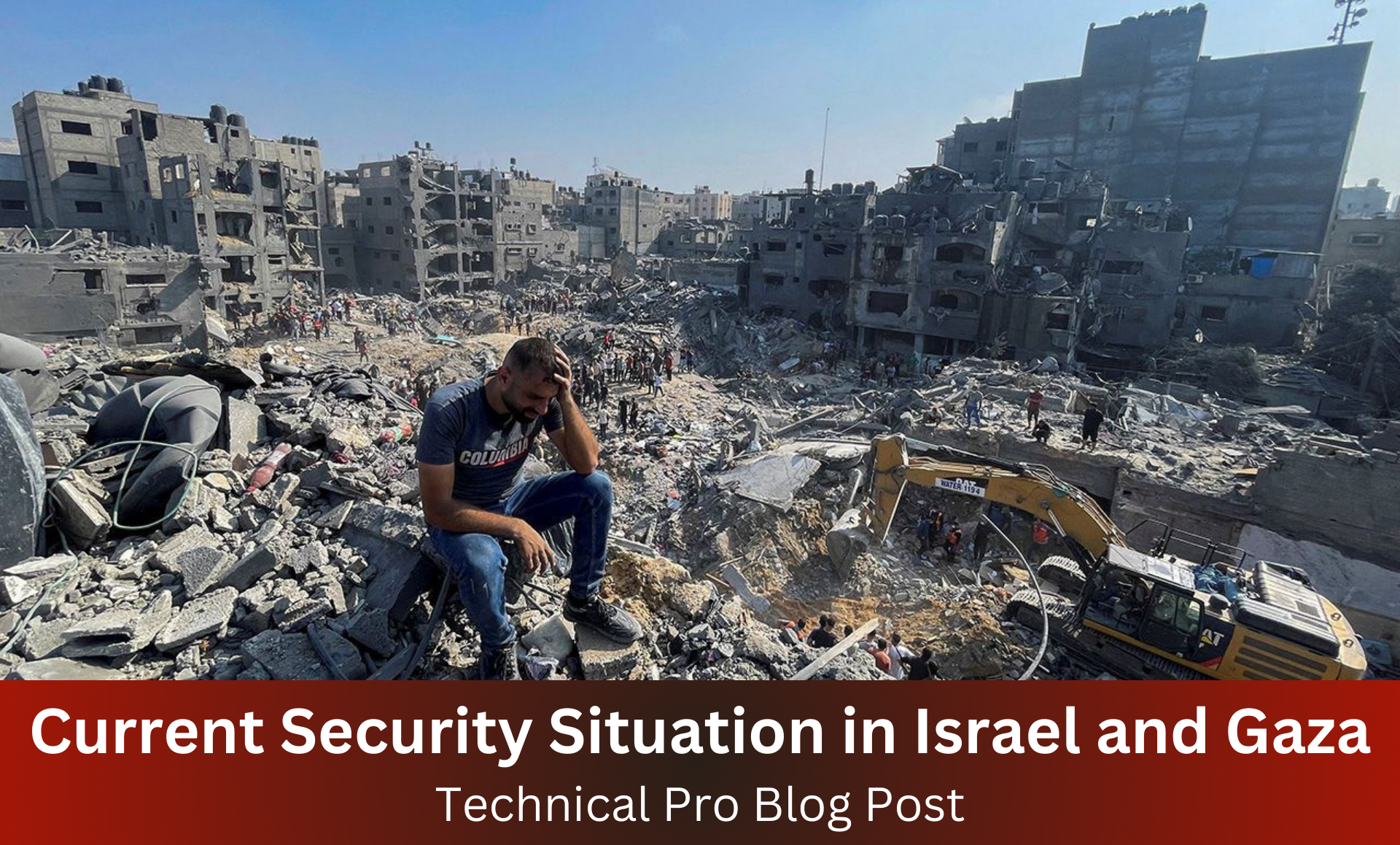The Israel-Gaza conflict remains one of the most deeply entrenched and volatile conflicts in the modern world. Its roots extend deep into the past, and its ramifications reach far beyond the borders of the Middle East. Understanding the current security situation in Israel and Gaza requires a comprehensive look at the historical, political, military, and humanitarian aspects that shape this ongoing struggle. This article aims to provide an in-depth analysis of the situation, highlighting key factors and future projections.
Historical Context
Origins of the Israel-Gaza Conflict
The conflict between Israel and Gaza has its roots in the early 20th century, stemming from tensions between Jewish and Arab populations in Palestine. The Balfour Declaration of 1917, which supported the establishment of a “national home for the Jewish people” in Palestine, ignited significant opposition among the Arab population. The subsequent waves of Jewish immigration and land purchases further fueled tensions.
The about of Israel and Gaza establishment of the State of Israel in 1948 marked a significant turning point. Israel and Gaza about The ensuing Arab-Israeli war led to the displacement of hundreds of thousands of Palestinians, an event Palestinians refer to as the Nakba, or “catastrophe.” Gaza, a narrow coastal strip, came under Egyptian control until it was captured by Israel during the Six-Day War in 1967.
Key Historical Events
Several key events have shaped the Israel-Gaza conflict:
- 1948 Arab-Israeli War: Following the declaration of the State of Israel, neighboring Arab countries invaded, resulting in significant casualties and the displacement of Palestinians.
- 1967 Six-Day War: Israel and Gaza the Israel captured Gaza, the West Bank, and East Jerusalem, further complicating the territorial disputes.
- 2005 Israeli Disengagement: Israel unilaterally withdrew from Gaza, dismantling settlements and military presence, but maintained control over borders, airspace, and maritime access.
- Hamas Takeover in 2007: Hamas, a militant Islamist organization, took control of Gaza, leading to a blockade by Israel and Egypt and recurrent conflicts.
Political Landscape
Current Political Climate in Israel
The Israel and Gaza about Israel’s political landscape is characterized by a diverse array of parties and ideologies. Recent elections have seen significant shifts, with coalitions forming to address the multifaceted security, economic, and social issues facing the country. The Israel and Gaza current government grapples with maintaining security, managing international relations, and addressing internal socio-economic disparities.
Governance in Gaza
Gaza is governed by Hamas, which won the 2006 Palestinian legislative elections and took control in 2007. Hamas’ governance is marked by a combination of military resistance against Israel and efforts to provide social services within Gaza. The political divide between Hamas in Gaza and the Palestinian Authority in the West Bank complicates Palestinian political unity and peace negotiations.
Influence of External Actors In Israel and Gaza
External actors play a significant role in the Israel-Gaza conflict. The United States, traditionally a strong ally of Israel, provides military and economic support. Iran, on the other hand, supports Hamas and other militant groups, exacerbating regional tensions. Egypt and Qatar often mediate ceasefires and provide humanitarian aid, while the European Union and United Nations advocate for human rights and conflict resolution.
Military Actions and Operations About Israel and Gaza

Recent Military Escalations
The Israel and Gaza region has witnessed periodic escalations, with significant military operations leading to casualties and destruction. In recent years, conflicts have been characterized by Israel’s targeted airstrikes against militant infrastructure and rocket attacks from Gaza into Israeli territory. These escalations often result in temporary ceasefires, only to be broken by new rounds of violence.
Tactics and Strategies
Israel employs advanced military technology, including the Iron Dome missile defense system, precision-guided munitions, and extensive intelligence operations. Gaza-based groups, primarily Hamas and Islamic Jihad, utilize guerrilla tactics, including rocket attacks, tunnel networks, and improvised explosive devices. The asymmetrical nature of the conflict sees a technologically superior Israel facing irregular and unconventional tactics from Gaza militants.
Impact on Civilian Populations
Civilians bear the brunt of the conflict. In Gaza, airstrikes cause significant casualties, damage infrastructure, and exacerbate humanitarian crises. In Israel, rocket attacks lead to deaths, injuries, and psychological trauma, disrupting daily life. Both populations suffer from the cyclical nature of the conflict, with each escalation deepening the wounds and fostering further animosity.
Humanitarian Impact (Israel and Gaza)
Casualties and Displacement
The conflict results in substantial civilian casualties and displacement. In Gaza, dense population areas are particularly vulnerable to airstrikes, resulting in high death tolls and widespread destruction. Many Gazans are forced to flee their homes, seeking refuge in temporary shelters. In Israel, rocket attacks also cause casualties and displace residents, especially in southern regions.
Human Rights Concerns
Human rights organizations frequently document violations by both sides, including indiscriminate attacks on civilians, the use of human shields, and the destruction of civilian infrastructure. These violations underscore the urgent need for accountability and adherence to international humanitarian law.
International Humanitarian Response
The international community responds through humanitarian aid, advocacy, and diplomatic efforts. Organizations like the United Nations Relief and Works Agency (UNRWA), the International Committee of the Red Cross (ICRC), and numerous non-governmental organizations (NGOs) provide critical assistance to affected populations. However, political constraints and access restrictions often hinder these efforts.
Economic Consequences (Israel and Gaza)
Economic Strain on Israel
The conflict imposes a significant economic burden on Israel, with defense expenditures consuming a substantial portion of the national budget. Frequent military mobilizations, damage to infrastructure, and disruptions to commerce further strain the economy. Additionally, the psychological impact of living under constant threat affects productivity and social stability.
Economic Challenges in Gaza
Gaza’s economy is crippled by the blockade, which restricts the movement of goods and people. High unemployment, poverty, and deteriorating infrastructure characterize the economic landscape. The lack of investment and opportunity perpetuates dependency on international aid, creating a cycle of economic stagnation and humanitarian need.
Role of International Aid In Israel and Gaza
International aid is vital for sustaining Gaza’s population. Humanitarian organizations provide food, medical supplies, and essential services. However, aid alone cannot solve the underlying economic problems, which require lifting restrictions and fostering sustainable development initiatives. Long-term solutions must address both immediate needs and systemic issues.
Social Dynamics About Israel and Gaza

Societal Divisions and Tensions In Israel and Gaza
The conflict exacerbates societal divisions, both within and between communities. In Israel, debates over security measures, peace negotiations, and relations with Palestinians create internal political rifts. In Gaza, the daily struggle for survival overshadows broader societal issues, but internal tensions and power struggles persist, complicating governance and resistance efforts.
Public Opinion and Sentiment
Public opinion is heavily influenced by the ongoing violence and media portrayals. In Israel, there is a strong sentiment for security and deterrence, with a significant portion of the population supporting military actions against perceived threats. In Gaza, resistance against occupation is a unifying theme, but there are also voices calling for peace and coexistence.
Impact on Daily Life
Israel and Gaza Daily life in conflict zones is fraught with challenges. In Gaza, power outages, water shortages, and limited mobility are part of everyday reality. Schools and healthcare facilities operate under severe constraints, affecting education and public health. In Israel, the threat of rocket attacks disrupts routines, with frequent alerts and the need for bomb shelters becoming a normal part of life.
Diplomatic Efforts and Peace Processes
Historical Peace Initiatives
Numerous peace initiatives have been attempted, with varying degrees of success and failure. The Oslo Accords in the 1990s aimed to establish a framework for peace, but the process faltered amid mutual distrust and continued violence. Other efforts, such as the Camp David Summit and the Roadmap for Peace, also failed to achieve lasting solutions.
Role of International Mediators
International mediators play a crucial role in facilitating dialogue and negotiations. The United States, the United Nations, and the European Union are among the key actors involved in mediation efforts. Egypt and Qatar often broker ceasefires between Israel and Gaza, highlighting the importance of regional actors in the peace process.
Current Diplomatic Challenges
Diplomatic efforts face numerous obstacles, including deep-seated mistrust, political divisions, and external influences. The lack of a unified Palestinian leadership, the expansion of Israeli settlements, and the influence of hardline factions on both sides complicate negotiations. Achieving a sustainable peace requires addressing these core issues and building mutual trust.
Security Measures and Defense
Israel’s Security Measures
Israel employs a multi-faceted approach to security, including military operations, intelligence gathering, and advanced technology. The Iron Dome missile defense system is a key component, intercepting incoming rockets and reducing casualties. Border security, surveillance, and counter-terrorism operations are also critical elements of Israel’s defense strategy.
Gaza’s Defense Capabilities
Gaza’s defense capabilities focus on asymmetrical warfare. Militant groups use rocket attacks, tunnel networks, and guerrilla tactics to challenge Israel’s military superiority. Despite limited resources, these tactics aim to create strategic advantages and psychological impact, often drawing international attention and sympathy.
Role of Technology in Security
Israel and Gaza Technology plays a pivotal role in the conflict. Israel’s technological advancements, from drone surveillance to cyber warfare, enhance its military capabilities and intelligence operations. Gaza-based groups also leverage technology, using encrypted communications and social media for coordination and propaganda. The technological dimension underscores the modern nature of the conflict.
Media and Information Warfare (Israel and Gaza)

Role of Media in Shaping Public Opinion
Media coverage significantly influences public opinion and international perceptions. Biased reporting, propaganda, and misinformation contribute to narrative wars, shaping support and opposition. Both sides utilize media to highlight their perspectives, often framing events to garner sympathy and justify actions.
Information Warfare Tactics
Information warfare involves using media and digital platforms to spread messages and influence perceptions. Social media campaigns, fake news, and strategic leaks are common tactics. These efforts aim to undermine the opponent’s credibility, rally support, and shape the narrative in favor of their cause.
Impact of Social Media Abou Israel and Gaza
Social media amplifies the conflict’s visibility, allowing real-time updates and personal stories to reach a global audience. However, it also facilitates the spread of misinformation and polarizing content. The viral nature of social media can escalate tensions, complicate conflict resolution efforts, and obscure the truth.
Terrorism and Extremist Groups
Presence of Extremist Groups in Gaza
Extremist groups, including Hamas and Islamic Jihad, play significant roles in Gaza. Their activities range from rocket attacks and tunnel construction to governance and social services. These groups often receive external support, complicating efforts to curb their influence and activities.
Counter-Terrorism Efforts by Israel
Israel’s counter-terrorism efforts are comprehensive, involving military operations, intelligence gathering, and international cooperation. These efforts aim to neutralize threats and prevent attacks, though they often result in collateral damage and international criticism. The balance between security and humanitarian considerations remains a contentious issue.
Global Impact of Terrorism in the Region
The presence of extremist groups in Gaza has broader implications, contributing to global terrorism networks and regional instability. Efforts to combat these groups are part of a larger international counter-terrorism strategy. The conflict’s intersection with global terrorism underscores its significance beyond regional borders.
Human Rights and Legal Issues
Violations and Accusations
Human rights violations are a significant concern, with accusations against both Israel and Gaza-based groups. These include unlawful attacks, detentions, and restrictions on movement. Documenting and addressing these violations is crucial for accountability and justice.
Legal Actions and International Law
International law, including conventions on human rights and warfare, provides a framework for addressing violations. However, enforcement is challenging, with political considerations often hindering legal actions. The International Criminal Court (ICC) and other legal bodies play roles in investigating and prosecuting crimes, but their efforts face significant obstacles.
Role of Human Rights Organizations
Organizations like Amnesty International and Human Rights Watch document abuses and advocate for victims. Their reports and campaigns raise awareness and pressure actors to adhere to international standards. Despite their efforts, achieving accountability and justice remains a formidable challenge.
Future Projections
Potential Scenarios for the Conflict
Several scenarios could unfold, ranging from continued conflict to potential breakthroughs in peace negotiations. Each scenario depends on numerous factors, including political changes, external interventions, and shifts in public sentiment. The path forward is uncertain, with both risks and opportunities.
Predictions by Experts
Israel and Gaza Experts offer varied predictions, with some optimistic about diplomatic solutions and others foreseeing prolonged instability. Their analyses consider historical patterns, current developments, and potential game-changers. The diversity of perspectives highlights the complexity and unpredictability of the conflict.
Long-Term Implications
The long-term implications of the conflict are profound, affecting regional stability, international relations, and humanitarian conditions. A resolution, or lack thereof, will shape the future trajectory of the Middle East. Addressing the root causes and fostering sustainable peace are essential for long-term stability.
Conclusion
The Israel-Gaza conflict is a complex and multifaceted issue, deeply rooted in history and marked by ongoing violence and humanitarian crises. Understanding the current security situation requires a nuanced analysis of political, military, and social dynamics. While hope for peace persists, achieving a lasting resolution will demand sustained diplomatic efforts, international cooperation, and a commitment to addressing the underlying causes of the conflict.
FAQs
What are the main causes of the conflict between Israel and Gaza?
The main causes include historical disputes over land, political tensions, and religious differences. The establishment of Israel in 1948 and the subsequent displacement of Palestinians are central to the conflict’s origins.
How has the international community responded to the conflict?
The international community’s response includes diplomatic efforts, humanitarian aid, and political pressure. Reactions vary, with some countries strongly supporting Israel and others advocating for Palestinian rights.
What are the main humanitarian concerns in the Gaza Strip?
Humanitarian concerns in Gaza include high civilian casualties, displacement, lack of access to essential services,
